AMC 8 Daily Practice - Pythagorean Theorem
Complete problem set with solutions and individual problem pages
Andy and Emily start from the same location. Andy walks meters west, and Emily walks meters south. Then Andy walks meters north, and Emily walks meters east. How far apart are they at this point?
- A.
- B.
- C.
- D.
- E.
We draw a diagram.

The distance between them is:
The figure below consists of three right triangles. What is the value of ?
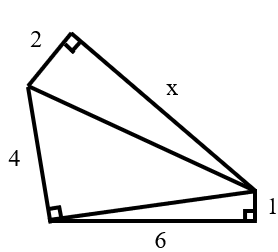
- A.
- B.
- C.
- D.
- E.
Since all three triangles in the figure are right triangles, we apply the Pythagorean theorem:
What is the length of ?
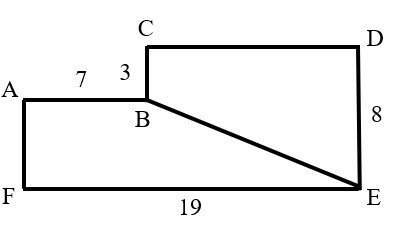
- A.
- B.
- C.
- D.
- E.
Draw a perpendicular line from point to , with the intersection point being .
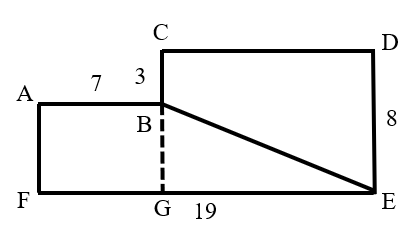
Then: , .
Since is a right triangle, by the Pythagorean theorem:
.
As shown in the figure, there is a lawn. It is known that , , , , and . Find the area of this lawn.
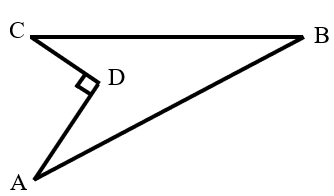
- A.
- B.
- C.
- D.
- E.
Connect .
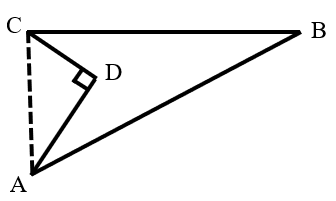
Since , in the right triangle : .
Given and , we find that , so is also a right triangle.
The area of the lawn is:
As shown in the figure, there are two monkeys at point , which is meters high on a tree. One monkey climbs down the tree to reach point (a pond meters away from the tree), and the other climbs to the top of the tree and then jumps directly to . The distance of the jump is calculated as a straight line. If the distances traveled by the two monkeys are equal, what is the height of the tree in meters?
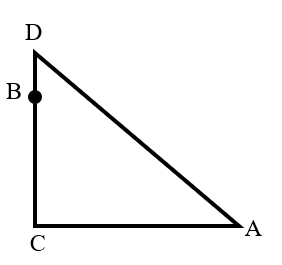
- A.
- B.
- C.
- D.
- E.
Let .
In the right triangle : .
Since the distances traveled by the two monkeys are equal:
Solving this equation gives .
Thus, the height of the tree is meters.
What is the area of square ?
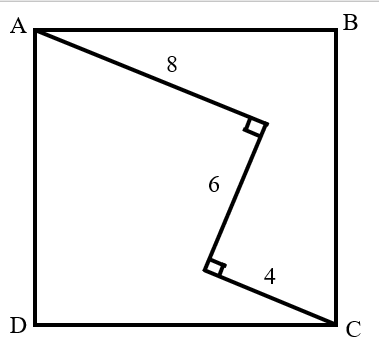
- A.
- B.
- C.
- D.
- E.
The area of a square can be calculated as or .
Connect and draw with as the foot of the perpendicular.
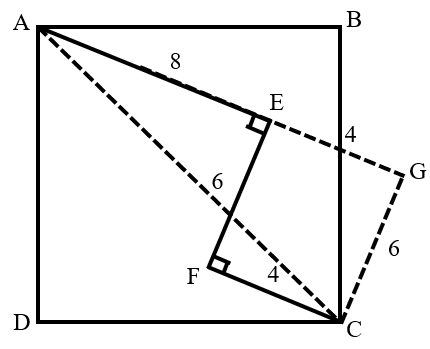
Quadrilateral is a rectangle.
In : .
Thus, the area of square is: .
In the rectangle, the arcs of the two sectors are tangent to each other. What is the area of the shaded part?
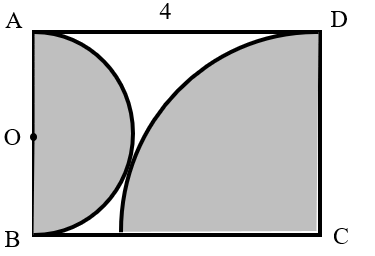
- A.
- B.
- C.
- D.
- E.
As shown in the figure, connect the centers of the semicircle and the sector.
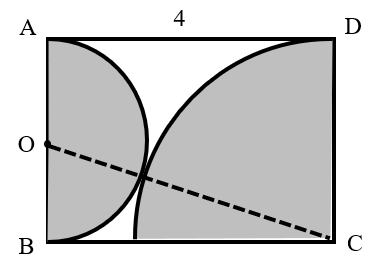
Let the radius of the semicircle be .
Since , the radius of the sector is .
In , by the Pythagorean theorem:
The area of the shaded part is:
Quadrilateral is a rectangle. What is the area of the quadrilateral ?
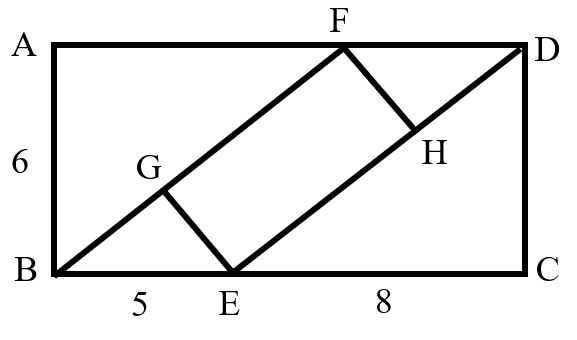
- A.
- B.
- C.
- D.
- E.
Given and , in , we find .
The area of parallelogram can be expressed in two ways:
and .
Thus:
Solving for , we get .
In the right triangle , by the Pythagorean theorem: .
Since , the area of the quadrilateral is: .
Answer: The area of the quadrilateral is square units.
- 1
- 2
- 3
- 4
- 5
- 6
- 7
- 8
